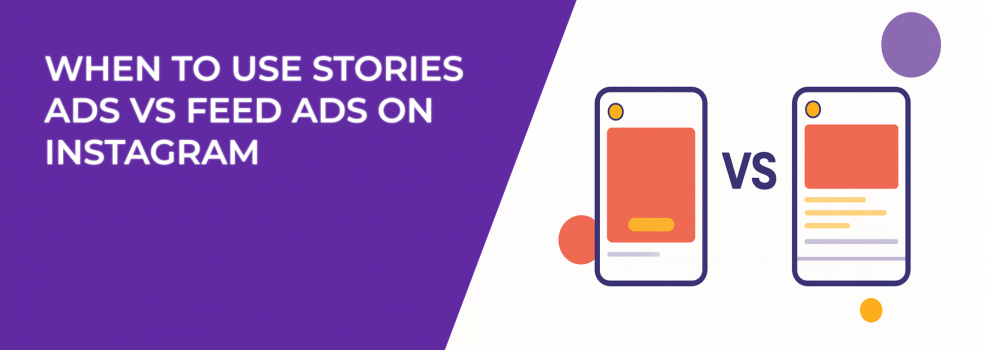Instagram advertising has evolved into one of the most effective ways to connect with audiences in 2025. But as options expand, many marketers still wonder: should I focus on Stories ads, Feed ads, or both? Choosing between these formats isn’t just about placement. It’s about context, user behavior, and the goal of your campaign.
Let’s break it down and see when each one shines.
Stories Ads: Fast, Immersive, and Disappearing
Stories are built for speed. They appear full-screen, vertical, and often vanish in 24 hours. That fleeting design is what makes them powerful. People tap through Stories quickly, scanning content almost like a daily news ticker. If you can catch attention in those seconds, you can create urgency and drive immediate action.
Stories ads are best for:
-
Time-sensitive promotions — flash sales, limited product drops, or seasonal offers.
-
Brand awareness — quick, engaging visuals that introduce your product without asking too much from the viewer.
-
Interactive elements — polls, stickers, swipe-up links (or tap links now that Instagram has integrated them more broadly).
The common thread here is urgency and interaction. When you’re trying to spark quick decisions or build instant buzz, Stories ads deliver. They are designed for snackable content that people can consume in seconds. However, this format requires clarity — if your audience has to think too hard about what you’re offering, they’ll swipe past without hesitation. The best approach is to keep the message short, visuals bold, and action steps obvious.
If you want a deeper dive into designing Stories that capture attention and drive clicks, check out How to Use Instagram Stories for Audience Engagement and Conversions.
Feed Ads: Stable, Scrollable, and Detailed
The Instagram Feed is slower, more intentional. Users linger here, pausing to read captions, zoom in on photos, or watch a carousel slideshow. This environment suits campaigns where you need more depth.
Feed ads are best for:
-
Consideration campaigns — when prospects are weighing options and need details before they decide.
-
Products with higher price points — think software tools, online courses, or luxury goods.
-
Content-rich ads — carousels with multiple images, longer captions, or videos that tell a story in more than a few seconds.
Unlike Stories, Feed ads let you explain more. You can educate, persuade, and nurture people who aren’t ready to buy on impulse. For example, showcasing a premium service often requires longer captions, testimonial quotes, or feature breakdowns. The Feed supports this because users expect to stop and scroll. They’re more open to reading and reflecting, which means you can build trust while still driving traffic or conversions.
For a full breakdown of ad formats across Facebook and Instagram — and how to decide which works best for your goals — read The Ultimate Guide to Facebook Ad Formats.
Stories vs Feed Ads: Key Differences to Keep in Mind
Both formats work, but in very different ways. Think of Stories as quick sparks of attention, while Feed ads act more like campfires, slowly building warmth and connection.
Here are a few questions to guide your choice:
-
Do you need urgency, or do you need time?
-
Are you promoting something low-cost and fun, or something that requires deeper consideration?
-
Is your creative built for vertical speed, or does it need horizontal space and multiple frames?
Asking yourself these questions before setting up a campaign can save you money and frustration. Marketers often waste budget by pushing long, complex messages into Stories, or by running short, flashy creatives in the Feed where they fall flat. Matching the ad format to the psychology of the moment ensures your message lands where it belongs. And in many cases, using both formats in a sequence — for example, teasing with Stories and educating with Feed ads — gives you the best of both worlds.
Practical Tips for Marketers
-
Design matters: Stories should be vertical, bold, and immediately clear. Feed ads can afford more detail, but they still need strong visuals to stop the scroll.
-
Think about frequency: Stories ads can appear in quick succession, so use them for short bursts. Feed ads work well over longer campaigns.
- Test side by side: Run A/B tests with identical creatives in Stories and Feed placements. You’ll quickly see which format drives conversions for your niche. For more structured testing methods that can save you budget, see .
Each of these tips sounds simple, but they carry weight. Design mismatches are one of the biggest reasons ads underperform. A great Feed ad often fails in Stories because it wasn’t adapted to the vertical format, and the same is true in reverse.
Frequency also shapes how people perceive your brand — if your audience sees ten Stories in a day, you risk ad fatigue, but if they see a Feed ad once or twice a week, it may feel like a steady reminder instead of an interruption. Finally, testing is where theory meets reality.
Every industry, product, and audience behaves differently, and running side-by-side placements gives you data you can act on rather than guesses.
Final Thoughts
There’s no universal rule for when to use Stories ads vs Feed ads on Instagram. The best choice depends on your goals, your product, and your audience’s behavior.
Stories are fast, immersive, and perfect for quick wins. Feed ads are steadier, richer, and better for decisions that take more thought. Both can play a role in your strategy.
The real question is — which format matches the story you want to tell right now?

